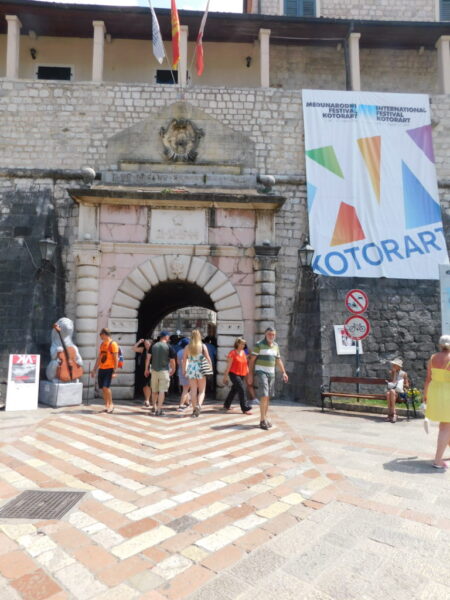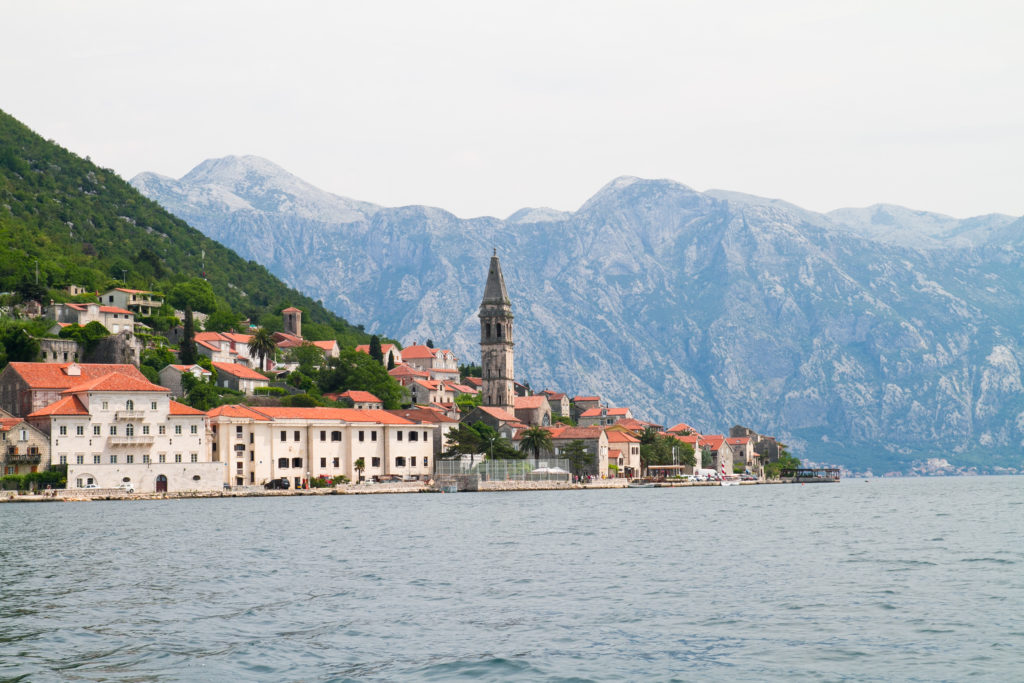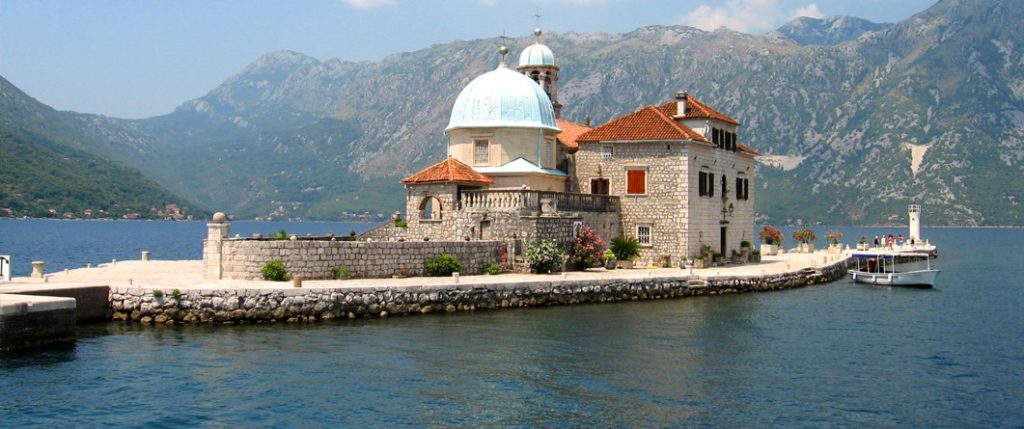On the Kotor Motor coach.
Driving south from Dubrovnik, the first border crossing exits Croatia. Then, after traversing about two kilometers of no man’s land, you reach the second border crossing to enter Montenegro. Continuing for about an hour along the shore of the Bay of Kotor, which many travel guides list among the 10 most beautiful bays in the world, we reached our first stop in the small town of Perast.
Because it’s surrounded by mountains, you might have heard that the Bay of Kotor is the southernmost fjord in Europe. Much as our local guide quickly disabused us, let me quickly disabuse you of that notion. While it does, indeed, look very much like a fjord, the bay was formed by tectonic shifts and fjords, as I hope you learned from this post about my trip to Scandinavia, are created by glaciation. Fjord or not, its beauty is unquestionable.
Perast is a tiny village with fewer than 500 permanent residents. It sits beneath the 893-meter hill of Saint Illija and at the strait of Verige which is the narrowest point of the Bay of Kotor. As you can see from the photo, it’s a charming spot but it’s probably a place most would bypass were it not for its two islands – one natural and one man made. In truth, I might thread the descriptive needle more accurately if I call them islets.
The island of Saint George on the left in the picture is the natural islet and the building is the Saint George Benedictine Monastery. You can also see a bit of the islet called Our Lady of the Rocks.
The story behind Our Lady of The Rocks is an interesting one. According to legend, on July 22, 1452, a local sailor found an icon of Mary and Jesus on a rock near the site. From that time, every sailor laid a rock in the bay upon his successful return from the sea and over the centuries, the islet emerged. The Roman Catholic Church of Our Lady of the Rocks was built in 1632. Here’s a better look:.
The church and its museum are known not only for the unique construction of the islet but for housing 68 paintings by Tripo Kokolja – a baroque artist from Perast – as well as its collection of silver votive tablets, and a tapestry embroidered by a woman named Jacinta Kunić-Mijović who was something of a real-life Penelope. According to the story, while waiting for her beloved to return from a sea journey (or journeys), she took 25 years to complete the tapestry gradually going blind and using not only silver and gold fibers but weaving her own hair into it as well.
From Perast, we moved just a few kilometers farther along the bay to the city of Kotor – if a population of about 13,000 constitutes a city. (Perhaps, in a country of only 630,000, it does.) Like Old Town Dubrovnik, Kotor is a gated city and few people live within the walls of the old city. The main gate is called the Sea Gate and had a closer proximity to the sea before the Austrians built up the present area in the 19th century.

Evidence indicates that Kotor was founded in the fifth century BCE. Over the centuries it has been under the control of Romans, Saracens, Serbians, Bulgarians, Venetians, Ottomans, French, Italians, the British, and the Austro-Hungarian empire before becoming part of the various incarnations of Yugoslavia in 1918. The city prospered most under Venetian rule from 1420 to 1797 and its architecture is typically Venetian in style. Kotor outlasted Ottoman sieges in the 16th and 17th centuries, the Black Death in 1572, and survived major earthquakes in 1563, 1667, and 1979.
Between 1797 and 1918, control of Kotor, known by its Italian name Càttaro, bounced between the Hapsburg Monarchy, the Napoleonic Kingdom of Italy, and the French Empire’s Illyrian Provinces before being restored to Austro-Hungarian control by the Congress of Vienna in 1815. It remained under the Habsburgs until 1918 and the name Kotor was officially restored.
In the next post, we’ll spend some time inside the city.


